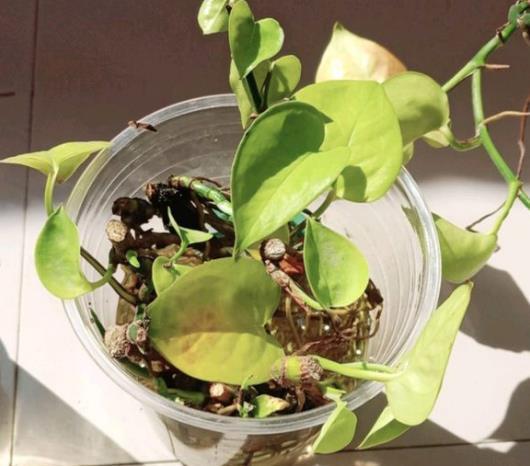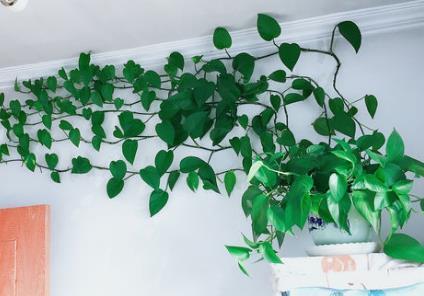Growing flowers in winter, these three kinds of water are easy to make plants wither and not grow well.

Not all water can be used to water flowers. Flower friends should pay attention to growing flowers in winter. If you do not water these three kinds of water, it is easy to make the plants "wither" and raise them badly. With the improvement of people's living standards, begin to cultivate more and more interests and hobbies in life, such as balcony indoor flowers, that for flowers, the following "three" water do not water flowers.
First: when it gets cold in winter, don't water the flowers with cold water.
Watering the flowers with cold water will cause harm to the flowers, so there is no problem if there is little difference in temperature. Try to use warm water, that is, water similar to room temperature. In winter, most plants are dormant, so there is little demand for water. Adjust the watering times according to room temperature. There is a principle for watering: do not dry, do not water, water thoroughly.
In general, the optimum temperature for the growth of flowers and plants is 20-25 ℃. For example, watering with warm water of 20-25 ℃ can accelerate the decomposition of organic matter in soil, promote the absorption of root cells, enhance the transport capacity of roots, supply sufficient nutrients to branches and leaves, and promote early germination, early budding and early flowering of flowers. This is because the average temperature of the leaf and stem of the plant is generally higher than that of the root.
Second: don't use "flood irrigation" to water flowers in winter.
It means that you can't water too much, and too much here means, don't cause stagnant water, it's better in summer. After all, the temperature is high and the water evaporates quickly. For plants, the effect is not great, but if it is in winter, evaporation is relatively slow, pots are easy to lack oxygen because of stagnant water, the breathing of plant roots is blocked, and the roots rot.
The third kind: domestic wastewater is not fermented
For example, common Amoy rice water, leftover soybean milk, etc., in fact, a little light Amoy rice water without fermentation can also water flowers, because Amoy rice water is rich in trace elements and other nutrients needed for flower growth, so, properly using Amoy rice water to water flowers can indeed promote plant growth. Amoy rice water for plants, more adequate nutrition, coupled with simple access, is very suitable for the watering of domestic flowers.
Ordinary rice washing water can not replace clear water for daily watering. Generally speaking, the water for rice panning for the first time is relatively thick, if it is directly used to water the flowers, it may cause the plants to burn roots, and the rice water contains starch, which will turn into sugars and attract insects after being decomposed by microorganisms in the soil. Generally, it is recommended to choose the second degree or the third degree of light rice washing water, watering it once a half a month. If you use the first degree of concentrated rice washing water, it is recommended to stop for about 1 month after one watering, and then water it a second time.
Here is a gathering place for flower lovers, sharing flower pot conservation skills, welcome to follow and exchange.
- Prev

Cute department | her cat keeps succulent plants with its owner, and it can't fit in the yard.
Photo author: mini.vani Source: ins all said that families with flowers, do not have cats and dogs, after all, if you are not careful, the flowers in the family will be spoiled by them! But today, Huahua would like to introduce a flower friend, Ban....
- Next

Three kinds of water green pineapple are most popular to drink. Pour a bottle of green leaf oil on the wall every month.
Friends who like flowers and plants will keep a pot of green apple at home, which is equivalent to an air purifier in a room of 8 to 10 square meters, which can effectively absorb harmful gases such as formaldehyde, benzene and trichloroethylene in the air. Green pineapple is not only life.
Related
- Wuhan Hospital Iron Tree Blooming Result Was Instantly Frightened by the Gardener Master
- Which variety of camellia is the most fragrant and best? Which one do you like best?
- What is the small blue coat, the breeding methods and matters needing attention of the succulent plant
- Dormancy time and maintenance management of succulent plants during dormancy
- Minas succulent how to raise, Minas succulent plant pictures
- What are the varieties of winter succulent plants
- How to raise succulent plants in twelve rolls? let's take a look at some experience of breeding twelve rolls.
- Attention should be paid to water control for succulent plants during dormant period (winter and summer)
- Watering experience of twelve rolls of succulent plants
- Techniques for fertilizing succulent plants. An article will let you know how to fertilize succulent plants.

